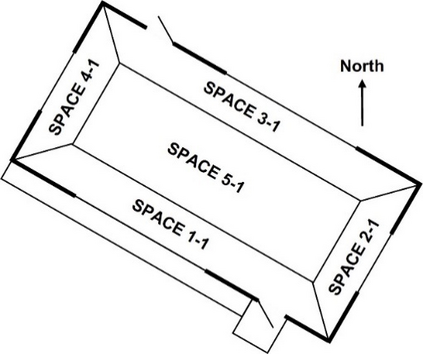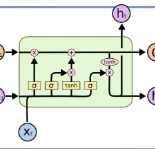Hybrid ventilation is an energy-efficient solution to provide fresh air for most climates, given that it has a reliable control system. To operate such systems optimally, a high-fidelity control-oriented modesl is required. It should enable near-real time forecast of the indoor air temperature based on operational conditions such as window opening and HVAC operating schedules. However, physics-based control-oriented models (i.e., white-box models) are labour-intensive and computationally expensive. Alternatively, black-box models based on artificial neural networks can be trained to be good estimators for building dynamics. This paper investigates the capabilities of a deep neural network (DNN), which is a multivariate multi-head attention-based long short-term memory (LSTM) encoder-decoder neural network, to predict indoor air temperature when windows are opened or closed. Training and test data are generated from a detailed multi-zone office building model (EnergyPlus). Pseudo-random signals are used for the indoor air temperature setpoints and window opening instances. The results indicate that the DNN is able to accurately predict the indoor air temperature of five zones whenever windows are opened or closed. The prediction error plateaus after the 24th step ahead prediction (6 hr ahead prediction).
翻译:混合通风系统是一种节能的解决方案,可在大多数气候条件下提供新鲜空气,但需要可靠的控制系统进行操作。为了最优化地操作这种系统,需要一个高保真度的面向控制的模型。它应该基于操作条件(例如窗户开启和空调系统的运行计划)实现近实时预测室内空气温度。然而,基于物理的面向控制的模型(即白盒模型)需耗费大量人力和计算能力。相反,可以使用基于人工神经网络的黑盒模型来训练成为良好的建筑动态估计器。本文研究了一种深度神经网络(DNN)的能力,即基于多元多头注意力的长短期记忆(LSTM)编码器-解码器神经网络,用于预测在窗户开启或关闭时的室内空气温度。训练和测试数据源自详细的多区办公楼模型(EnergyPlus)。伪随机信号用于室内空气温度设定点和窗户开启时机。结果表明,DNN能够准确地预测五个区域在窗户开启或关闭时的室内空气温度。预测误差在第24个步骤(6小时预测)后摆平。






















